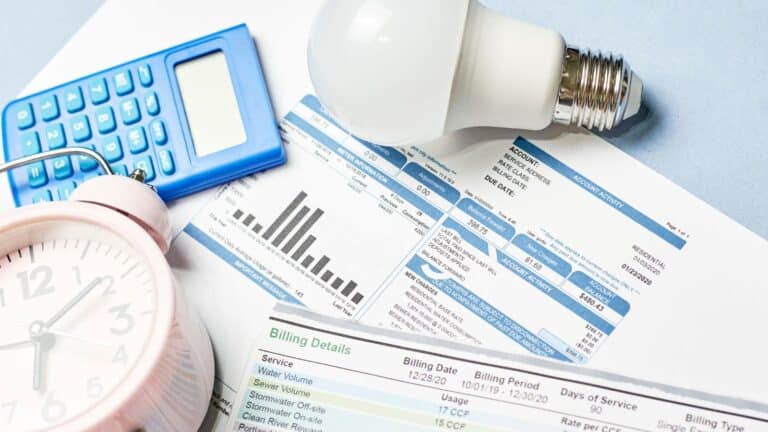China Halts U.S. LNG Imports Amid Tariff War
China has ceased importing liquefied natural gas from the United States since early February, as the ongoing tariff war impacts energy trade.
Current Access Level “I” – ID Only: CUID holders, alumni, and approved guests only
Bob Bullard [00:00:03] Over the last four or five decades, we’ve been pushing to get the concept of environmental justice into our policy, into our framing, into our DNA in terms of government and trying to dismantle those systems that somehow unfairly think of some communities as not having the value. America is segregated, and so it’s pollution.
Bill Loveless [00:00:25] Federal funding for environmental justice is beginning to flow. The Biden administration came into office in 2021 determined to make environmental justice a major priority with executive orders and an initiative called Justice 40. President Biden aimed to get off to a fast start. Now, two years later, with the enactment of the biggest climate legislation in history, as well as a massive infrastructure bill. Washington has the money and the projects to emphasize the importance of environmental justice more than ever. In January, the Environmental Protection Agency announced 100 million in grants for state and community organizations to address local, environmental and public health issues. And that’s just the beginning. With money starting to move. Activists are focused on making sure it’s used effectively and doesn’t exacerbate existing problems. How does the federal government decide what projects qualify for environmental justice funding and what lies in store for the advocates working to build cleaner, more equitable communities? This is Columbia Energy Exchange, a weekly podcast from the Center on Global Energy Policy at Columbia University. I’m Bill Loveless. Today on the show, Bob Bullard and Maria Lopez-Nunez. Bob Bullard is a pioneering figure in environmental justice. He is the founding director of the Bullard Center for Environmental and Climate Justice and Distinguished Professor of Urban Planning and Environmental policy at Texas Southern University. He also serves on the White House Environmental Justice Advisory Council. Maria Lopez-Nunez is the deputy director of organizing and Advocacy of Ironbound Community Corporation. She was part of a team that fought for New Jersey to pass landmark environmental justice legislation. The bill helps the state assess public health and environmental risks for renewing or expanding industrial facilities. Maria is also on the White House Environmental Justice Advisory Council. I spoke with Bob and Maria about the momentum building behind the environmental justice movement. We discussed the opportunities for federal funding made available in the past two years and how it could affect energy infrastructure projects. Please enjoy our conversation. Bob Bullard, Maria Lopez-Nunez, welcome to Columbia Energy Exchange. You know, Bob, we last spoke in June 20 2021, a few months into the Biden administration and well before Congress passed the Inflation Reduction Act and the bipartisan infrastructure bill. You know, at that time, you seemed optimistic that the administration was on the right track when it came to dealing with environmental justice. How are you feeling now?
Bob Bullard [00:03:17] Well, I think we’ve had two years under our belt, and I’m still optimistic. I think that we’ve got an administration that has elevated environmental justice to the highest level. We’ve never had an administration that actually put environmental justice in a framework that that talked about having resources, follow need benefits and investments following need. And so I think it’s important that that’s clear and it’s understood. We have the Justice 40 initiative and the White House Environmental Justice Advisory Council. The the Congress passed the the bipartisan infrastructure infrastructure law and the Inflation Reduction Act. And the it was not just Congress moving forward with these initiatives, but I think having an administration that would also make sure that the equity and justice lens would be applied as those billions in the case of the bipartisan infrastructure. First of all, we’re talking trillions. So the money is there, the investments are there, the resources there. So the challenge is to ensure that those benefits and those investments in those dollars follow need. That’s where the rubber hits the road.
Bill Loveless [00:04:45] Well, you’re known, of course, as the father of environmental justice, having written 18 books on the topic over the last 40 years, since your work in the 1970s studying the concentration of landfills in black communities in Houston. A lot has changed over the years.
Bob Bullard [00:05:00] Yes, a lot of change. In 1979 when I start got started. You know, environmental justice was a footnote and 42 years later, it’s a headline. And the concept has now been incorporated into the framing. But we still have challenges. The challenges in terms of structural are systemic barriers that keep some communities left out and left behind. That’s where we are right now. Not the fact that we don’t have enough data. We don’t have enough research and findings and and information. The fact is that that information is not getting translated into policy. And as I said before, when the rubber hits the road, that’s what counts.
Bill Loveless [00:05:45] Well, Maria, like Bob, you are a member of the White House Environmental Justice Advisory Council and you work for the Ironbound Community Corporation. Tell us about that group and your work there.
Maria Lopez-Nunez [00:05:58] So for those that don’t know Ironbound, the neighborhood in the great city of Newark, New Jersey, right, the biggest city in New Jersey and in our neighborhood, we’re the neighborhood that’s right along the river, the Passaic River. Right. And the Passaic River is the longest Superfund site in the country. It’s 17 miles. And that’s because in Ironbound, during the Vietnam War, we were the largest producers, Region Orange. And so there was a byproduct dioxin, which is very cancer causing. And we’re dumping it into the river and letting it get picked up on wheels spread throughout the neighborhood. So we have over 100 Superfund sites. We have three power plants where next to the state’s largest garbage incinerator, the state’s largest waste sewage treatment facility. And we’re right next to the port of Newark and Elizabeth, which I just port in the country right now. So all of that that I’m describing, it’s just a four square mile neighborhood known as the Ironbound. That’s where I do my work. And we’ve been around for 53 years. So, you know, it is a legacy of community resistance and realizing there’s a big problem and it goes far beyond just the water we drink. It’s the air we breathe, it’s the land we live on. And most of all, it’s the system that we’re subject to, right, that keeps placing all these industrial facilities in our neighborhood and not in the white suburbs that are still nearby.
Bill Loveless [00:07:17] Well, you know, increasingly people are aware of environmental justice, and particularly when we hear of the history of development and difficulties in communities such as your community in Newark, Maria, or yours? Bob down in the Houston area. But while people are perhaps more aware of environmental justice, I think it bears asking again for anyone who may not be clear what is environmental justice?
Bob Bullard [00:07:48] Environmental justice embraces. The principle or the concept that all people in all communities are entitled to equal protection of our environmental laws, housing, transportation, energy and the issues of health. So we’re talking about a basic human right to breathe clean air, drink clean water, and have our kids play outside and not be playing on contaminated soil. So it’s basically a right to be safe and the right to have your your lives and your community being given the respect. That’s what environmental justice is.
Maria Lopez-Nunez [00:08:25] I would even go to say that environmental justice is really explicitly about fight, fighting and ending environmental racism. Right. Because I feel like any of these folks are starting to think that it’s justice for the environment, but it’s actually justice for people, especially people of color in this country and low income people who have been subject to disproportionate harm at the hands of our policies and funding.
Bill Loveless [00:08:49] You know, InsideClimate News recently ran an excellent article on environmental justice and federal efforts to put some money behind the movement. The reporters there spoke with you, Bob, and spoke with you as well. Maria, the story noted that, quote, The disparate impacts of environmental disasters are not new, but the push to address environmental justice is finally taking place and gaining momentum This year will begin to test whether new federal policies and massive investments focused on climate will actually benefit the low income families and communities of color. Bob, you sort of touched on this a moment ago, but that said, is this a fair assessment of where we stand right now?
Bob Bullard [00:09:33] Yeah. Where we stand right now is that over the last four or five decades, we’ve been pushing to get the concept of environmental justice into our policy, into our framing, into our DNA in terms of government and and trying to dismantle those systems that somehow unfairly think of some communities as not having the value. America is segregated and so as pollution. And so today we have the challenge of ensuring that the fact that many of us did in those long lines and voted during COVID and the election came out in many ways the way we want it. The Congress passed some tremendous transformative legislation, for example, the bipartisan infrastructure law, as well as the Inflation Reduction Act. If you look at the inflation reduction, that is just one example. We have $370 billion with a B for climate. We’ve never had anything like that before. And of that 370 billion, we have 60 billion dedicated to environmental justice and another 60 billion for clean energy transition. So the challenge today is to ensure that those resources that we have rightfully earned with the fact that our communities for too long has been left out and left behind. We have to ensure that those monies go to where the need. And we have worked with the White House Environmental Justice Advisory Council working on the screening tool, and we’ve worked on tracking tools. But again, we still have to understand that race and racism oftentimes continue to be the driver as to which communities get left out. So we cannot allow those screening tools to somehow track monies and investments away from where it’s needed the most. That’s the challenge today. And I think the fact that we have the data, we have the science, we have the facts, but facts alone have never been enough to get justice results. We have to marry those facts with advocacy and with education, training and building the capacity of our frontline communities. That’s the formula for success.
Bill Loveless [00:11:59] Well, Maria, on that point, you told InsideClimate News that environmental justice advocates will have to split their time and their resources this year between applying for grants and playing watchdog to stop money from reaching projects that could be harmful to communities. You said, quote, We have to fight the bad and embrace the good. What did you mean by that and what types of projects concern you?
Maria Lopez-Nunez [00:12:27] You know, it is kind of the the job of environmental justice advocates of constantly trying to embrace and create the world we want to live in, and then recognizing that obviously there are environmental justice communities for a reason, right? There have been sacrifice zones for a reason, and that is because, you know, racism is entrenched in policy and how we use the land that we live on, right where we put the industrial sectors. And when we’re talking about billions of dollars going into things like carbon sequestration and carbon capture, those are highly experimental technologies. We don’t actually know how to do that yet scientifically or in a way that financially feasible. I mean, most recently in Kalamazoo, Mississippi, we did see explosion of a CO2 pipeline, right, which was supposed to be storing and transporting carbon. And so when you think about an explosion that sent people to the hospital that people had to be evacuated with, and we’re considering the amount of money we’re now going to invest in those experimental technologies, we have to be very careful about what communities are going to be saddled with the experiments and what the consequences might be if there are not enough guardrails or the ability for communities to say no to these projects. And so, yes, there’s a lot of wonderful opportunity in the IRA, and unfortunately, there is a lot more money being invested in what we call for solutions. Right. Counterproductive measures. We’re going to be investing in hydrogen hubs. We’re going to be investing sometimes, you know, the fossil fuel industry just wants to greenwash itself, call itself something new, renewable natural gas, but it’s still natural gas and renewable diesel. And it’s the same old fossil fuel projects of yesterday with a branding update. And we have to be very careful about how they manage that money and what communities they’re experimenting on.
Bill Loveless [00:14:20] Yeah, and of course, the you know, the advocates of that will say, well, this is technology that could pay off in the long run, right. If you can capture the CO2 from some of these fossil plants and bury it or otherwise use it, it would be a good thing. But you’re saying you feel the technology is still that unproven?
Maria Lopez-Nunez [00:14:40] Of course, capturing the carbon out of the air would be wonderful. But if it’s going to be called explosions while we figure out how to get it right, I don’t want that to be in black and brown communities throughout this country because I’m sorry, this country has a history and a legacy of experimenting on black and brown people. Right. And so we can’t continue doing that with climate science.
Bob Bullard [00:15:00] Yeah. I think just to add, what you’re saying is I think the the fact that a lot of these experimental, risky technologies oftentimes are being fast tracked, while we’ve not we don’t have the adequate kinds of science in the data. For example, there has never been a National Academy of Science study on carbon capture storage or on hydrogen hubs in terms of infrastructure. For example, when we talk about all the billions of dollars that’s been in highways and other building, we know that every highway is not a good highway or they’re not a good project. I wrote a book in 2003 called Highway Robbery, and we know that in the fifties, when they built the, you know, the the highway across the U.S.. Many of those highways destroyed poor communities and communities of color. And and today there are some projects, bad projects that are that are being put in place and using the bipartisan infrastructure law and transportation dollars to continue that 60 year legacy. Those are bad projects. And those of us who are working on transportation and energy, justice, climate justice and economic justice are saying no to those bad projects. We will not see the money that we fought for. As I say, it stood in line to be used against us. And for many of those states that are down south and I’m down south, I’m in Dixie, and many of the states are the red states oftentimes of when those monies go to the state, the red state, our blue cities somehow get left out and we have to fight for good projects. That’s the I guess, the the reality that many of us face when we talk about economic and environmental and climate justice and funding justice. We’re talking 2023. But some of these struggles were fought in a very similar. Situation. 40 years ago. And it’s. And we don’t want, you know, history to repeat itself in terms of those federal funds being used somehow, once again to disenfranchize our communities, to leave our communities behind. The levee on the other side of the wall, on the other side of the of the area where that’s being developed and cleaned up. Now, we will not stand for that. That’s unacceptable and we are very serious on the White House Environmental Justice Advisory Council, all 26 of us, that we do not see those bad projects as solutions. They are false solutions. Yeah.
Bill Loveless [00:17:40] Well, you’ve spoken about the steps the administration has taken so far and how you’re, you know, pleased with what you’ve seen so far. You talked about the Justice 40 initiative, which would direct federal agencies to deliver 40% of the overall benefits of their environmental and energy investments to disadvantaged communities. But when you sit on the White House Advisory Council and I assume you’re hearing, you know, off and on, at least from officials from these various agencies, what are you hearing? Are these agencies equipped, prepared to administer these laws and distribute these this funding in a way that you feel will be equitable and will address these environmental justice challenges?
Maria Lopez-Nunez [00:18:26] I would say that I would like to see more preparation on behalf of agencies. And I also don’t blame the agencies, right. Because when you’re talking about decades of bureaucracy that has behaved in one way what we’re asking for, it’s pretty transformational, right? We’re asking for start to think about things in a way that they clearly haven’t because we have injustice and to reconsider their relationship to communities. So we’ve been trying to be encouraging of how agencies must look to communities as partners to help guide them, to help show them the way of where the money is needed. They should really feel away from the intermediaries who are often managing those relationships and thinking that they know what’s best for communities. Communities know, know what’s best for them. And, you know, we encourage agencies to talk directly to those communities. And I would like to see I would love to see the federal government doing more to educate the states about this.
Bob Bullard [00:19:24] I think the fact that the federal government right now, it’s trying and there is a culture within sight of these agencies that that is attempting to change with the times in terms of taking the input from front line communities and from the community university partnerships and from those who are out there and have been out there for decades to learn from those experiences and and not just go to the easy low hanging fruit all the time. And I think the relationship that the agencies have with with the states, as Maria said, is very important. And I think the the federal government, whenever those states or agencies within those states don’t perform to the letter of the law when it comes to enforcing civil rights, equal protection, carrying out the mandates of the the policies and regulations that’s been delegated to those states, the federal government must must somehow exert a vigorous oversight and not allow states somehow to get away with what they’ve been getting away with for decades. And so it needs a new relationship that that hopefully will be one of mutual respect and mutual priorities in terms of where communities are and those communities that have been left out and left behind. So that’s a that’s a sea change from 40 years ago. And in some cases, some of our our governmental entities are still stuck in that 40 years ago. It’s a new day. It’s a new a new world. We have executive orders, we have legislation, we have funding. And now we have to have the commitment from the various levels of government to ensure that if that that those mandates are carried out in the way that the it was perceived and the intent.
Bill Loveless [00:21:41] Right.
Bob Bullard [00:21:42] Of getting results.
Bill Loveless [00:21:43] Right. It’s a big challenge. And just recently I was reading that the EPA is woefully understaffed. It lost it has lost, you know, thousands of very capable and trained and technical people that would be relied a. On to implement new initiatives such as this one. I’d like to take the conversation a little bit from the sort of you’re talking about this in rather general terms and to something specific and tangible. And I was sort of searching in my preparation for our conversation to see, you know, what is something that’s happening at an agency that may have legs when it comes to acting on environmental justice. And I picked one and you can tell me if this is a good or a bad one. But I read that recently EPA announced a set of principles outline outlining resources and recommendations to its regional offices for addressing environmental justice when it’s considering air permits. And Bloomberg Law reported that clean air attorneys and advocates expect tougher EPA scrutiny of environmental justice considerations in air permitting. Following this action by the agency. Is is is that a good example? Is that a good start by EPA?
Bob Bullard [00:22:56] When we talk about integrating environmental justice principles and concept into permitting, that has been, you know, decades long kinds of demands that we’ve seen now that we have that kind of of action at the highest level in terms of EPA. We also have the administration creating an environmental justice civil rights office inside of the US Justice Department. So we have the EPA and the Justice Department looking at air permitting and air quality. The next level is the looking at cumulative impacts, because if we talk about just looking at one permit and not what’s already there or noncompliance and not looking at what’s happening with all of those different facilities and permitting and the and the and the city or the county or the region being in noncompliance, all of that needs to be taken into consideration. That’s what we have been asking for for decades. And the communities that are impacted the most, they’re making the most demands for more stringent. Now, we have resources now for community monitoring, millions of dollars now looking at real time monitoring. And the and the monitors now have prices come down and the levels of sophistication of the monitors in terms of the of their their ability to capture what’s really needed. Having grants, having communities get those grants, having the city counties operating in collaboration with our with our community based organization. These are these are things that have come into the last in the last year that we have been saying for the last 40 years. But we still have to be resolute. We have to be vigilant about not just taking it for granted that just because you have it, it’s going to happen. No, communities have to make it happen.
Bill Loveless [00:24:51] And do the agencies have the legal standing to act on these environmental justice issues? I mean, there are executive orders and there’s money that’s been authorized and appropriated to do these things. But is there is there sufficient legal standing for an agency like EPA, for example, to take environmental justice in consideration into consideration when it’s deciding on an air permit or end up in court and lose?
Maria Lopez-Nunez [00:25:19] I always like to say a third grader can figure out creative impacts. They could look around, say this too many smokestacks and factories in this one area. And I think the average American thinks that. So can the EPA. Right, because that would be a logical way to do a permitting to consider the whole contextual situation of the siting of a facility. But unfortunately, we pick off, you know, air permits separate from the water, separate from the the waste. And really it’s the whole impact that ends up affecting people’s lungs and respiratory issues that ends up affecting people’s health.
Bill Loveless [00:25:54] Yeah. Bob, I mean, Maria makes a good point. I was just thinking that EPA has gotten its knuckles rapped, you know, over the past year by the Supreme Court over its interpretation of of emissions rules. It’s it’s had under consideration for power plants.
Bob Bullard [00:26:10] Yeah, that’s true. But but the environmental justice community has always said that the federal government should take the strongest position when it comes to protecting public health, and it should take a strong position to make sure that it is monitoring and ensuring those those regulations that is has delegated to the states that the states themselves are carrying them out in a nondiscriminatory way and in a way that that is protecting all communities. And the EPA does have the the responsibility of making sure that that that its policies don’t have a negative and a disproportionate and discriminatory impact on communities and the way that it funds it permits it allows the delegation. So that’s the newness of the perception. And we’ve take the position that if you if EPA should air, they should air on the side of public health, The EPA created and elevated environmental justice and civil rights to an assistant administrator level. As a matter of fact, that is system administrator love. We never had an assistant administrator for environment justice in civil rights. That’s equivalent to a regional administrator. So. So yes, environmental justice gets elevated. So that means that EPA should use its authority and its power wherever it has that power and not back away. Don’t get bullied by these state attorney generals and don’t get bullied by by those by the industry that will somehow say you don’t have that authority. And I think the EPA should, as I said before, take the position that they have the authority. And if they have to go to court, go to court and not just somehow back down and and be timid and shy, we need a strong EPA. Our nation needs a strong EPA in the world needs a strong EPA in terms of our climate policies and our other policies. Not a weak.
Bill Loveless [00:28:24] One. All right. And I think you feel as though the administrator there, Michael Regan, is is. Here’s here’s you. Agrees. And you know, I’ve read where you’ve had this conversation with him and you feel as though he’s prepared to to act along those lines.
Bob Bullard [00:28:42] Yes. My my position is that that if the EPA administrator operates in a way that’s protective of our communities and is going for environmental justice and has the laws and the regulations that are in place, that, you know, in terms of our center and the partnerships that we have with communities and the work that we do, we say we’ve got his back, we’re going to fight on the outside to ensure that what what the administrator and the administration is trying to do on the inside. That’s how we’ve got to move this, because there are a lot of forces arrayed against of of us being successful. We know that. I mean, that’s billions of dollars being spent. To maintain the poisoning of communities, to be so dependent on fossil fuels and oil and gas that somehow we don’t want to move and transition to clean energy economy. We know those forces. And and so we have to fight those forces. We can’t fight them dollar for dollar, but we can’t educate, we can’t organize. We can mobilize and array our people and our organizations and institutions to fight that because our communities have to fight as if their lives depended on it, and our lives do not. So it’s not just something that, you know, just leisure and, you know, just you want to do this as a fad? No, this is real. This is real.
Bill Loveless [00:30:03] You know, Maria, speaking of states, New Jersey passed in 2020, what you say is the most progressive environmental justice law in the United States. What does it do? And has it been effective so far? I know it’s been an issue for you and your colleagues in Newark regarding a proposal for a gas fired power plant there.
Maria Lopez-Nunez [00:30:28] Yeah, And I mean, it should say something that we’re a four square mile neighborhood and we’re fighting off our fourth power plant right now. Unfortunately, the environmental justice law was signed in 2020, but it’s not effective yet, right, as is the case with a lot of laws. So you have to you have a long road on rules and regulation ahead of you. We are currently waiting for the governor’s office to release the rules. Right. So they’ve been promulgated, they’ve been public comment. And so we’re waiting for them to make their way onto the public register so that we can actually start seeing if it’ll be effective or not. But what the law is actually does, it forces our Department of Environmental Protection to deny facilities in overburdened communities when to increase the localized stressors, whether that be PM 2.5 or asthma rate. If they’re going to give a contribution to that, then they must be denied. And that’s what makes it so strong. It’s not just an assessment. You know, a lot of our laws stop at just assessing the problem. It actually mandates action. And that action is to deny those permits for a facility that would continue contributing to the environmental harms in environmental justice communities.
Bill Loveless [00:31:39] Yeah, this I should note, this power plant is one that would has been proposed by the Passaic Valley Sewage Commission. And Maria, tell me if I get anything wrong here. It’s a proposal is for an 84 megawatt plant that’s not very big but it’s it would be part of this sprawling sewage treatment plant in Newark which treats wastewater for I’ve read one in six New Jerseyans and services customers along the East Coast. The agency’s director has said, you know, the agency has concerns about emissions from the facility. It wants to be a good neighbor. But I know you and your organization remain concerned.
Maria Lopez-Nunez [00:32:18] And you know what’s funny? The power plant said it’s being proposed because of climate change, but they want to contribute to climate change in order to protect themselves from potential future power outages that honestly have not happened since Superstorm Sandy. Right. We’ve actually we spent almost $2 billion in New Jersey hardening the grid in order to make sure that power outages at facilities like Peabody did not happen. Also, natural gas is the West worst way to backup power, right? Because natural gas lines during storms have explosions. They go off. Natural gas is actually highly unreliable. So we need to check those narratives of this is a necessary evil in order to protect communities.
Bill Loveless [00:33:06] You know, what I wonder is when we look at these communities in the White House, does it apply some metrics to agencies to apply some metrics in deciding what is a disadvantaged community? You know, what sorts of factors does it use to make that determination?
Bob Bullard [00:33:24] Bob There’s a designation in terms of disadvantage and those of us who are on the on a we check, we didn’t like that term, but that’s what they decided to use. And again, that’s a that’s a determination that the Office of Management and Budget, OMB decided in terms of a metric based on the level of poverty and income levels, meeting a certain a certain threshold. And what we said is that that when you use disadvantaged, that’s somehow tied to an economic metric, you under estimate the impact of structural racism that will disadvantage community based on race in terms of middle income communities, that that may somehow get more than their fair share of power plants in landfills and incinerators and petrochemical plants because they are. Black or brown. And so race in some cases will trap income. And so if you’re just using an economic metric, which the EU actually left out of the climate and economic justice screening tool and we fought to have race in. But but we lost. And it was said that if we had race in that tool, the whole thing could go down the drain because in terms of just as 40, because they would probably get sued and and lose in the courts. So but again, when we think about the idea of which communities are overburdened with pollution and which communities oftentimes are more likely to somehow have elevated vulnerabilities for climate, it’s not just an income thing. As a matter of fact, African-American middle income African-Americans who make 50 to $60000 a year are more likely to live in neighborhoods that are more polluted than than whites who make $10,000 a year. How do you account for that? Segregation, racial segregation, housing and housing discrimination. As I said before, America is segregated and so is pollution. And so if you just used the the poverty and the income metric, you will miss out on those populations, those communities that were redlined 100 years ago or communities somehow that the money and the and the infrastructure bypassed those communities, middle income, low income just because of the race of the population and the lack of political clout. That’s the reality. Those are studies that that those of us have been writing about for the last 40 years. And so that means that we have to supplement and complement the screening tool that the government’s using with additional tools that incorporate more and more powerful metrics that capture that that systemic nature of how race operates in America.
Bill Loveless [00:36:29] Yeah, it sounds like it sounds like a rather significant omission. I don’t know. Maria, do you do you think this creates troubles when you’re trying to bring attention to the communities that are most in need or are in need of help here to avoid an environmental catastrophe, a new one or a continuing one?
Maria Lopez-Nunez [00:36:53] Yeah, I mean, of course it does. It creates a problem. I mean, we keep talking about environmental justice and as we said, environmental justice is a response to environmental racism. So it is hard to have the conversation and pretend that it’s colorblind. You know, our our institution and our policies have not been colorblind in history. And so it’s hard to admit that from the conversation. I am trying to understand why the government has chosen to do so. But I think we will never really heal from our legacy until we’re honest about our history.
Bill Loveless [00:37:26] Right?
Bob Bullard [00:37:27] Yeah. Yeah. And this is Black History Month is always almost like like when we talk about these issues, there are some people that want to somehow ignore the fact that the footprint of of racial inequality as it relates to, for example, racial redlining that occurred in the twenties and thirties, that footprint occurs in the 2020s today when we talk about which communities are more likely to flood racially redlined neighborhoods, which communities are more likely to have higher concentration of industrial air quality and pollution ratio. Red line neighbors. Which neighborhoods are hotter because of no infrastructure in terms of green canopy trees, parks, etc. Racial redlining in which neighborhoods are more likely to to suffer from COVID hospitalizations and deaths the same communities in terms of asthma. So it should not it should be no surprise and this is not rocket science, it’s more political science. So we have to ensure that the research and the data and the findings and the facts that we have also get integrated into our policy and our solutions. That’s been the battle, as very will tell you, that on our own how we act, it’s been a battle in terms of policies on the ground, whether it’s in New Jersey or whether it’s in Texas. And we have to still fight to ensure that those facts and those data and those that information make it into our decision making and not just be held on the outside and not just be somehow catalog and at universities, in the library or in our centers. We want research to action. That’s what we need and that’s what we do at our center.
Bill Loveless [00:39:18] You know, the issue isn’t just one for the U.S. to deal with, Right, Bob, you in November, you were. Part of a delegation that attended the COP 27 U.N. climate meeting in Egypt to bring environmental justice to the attention of delegates from around the world. What was your message there? How was it received?
Bob Bullard [00:39:36] Well, the message that that we took to COP 27 in Egypt and I have been to at least, you know, at least 20. And the message was that we have never had a climate justice, environmental and climate justice pavilion in the blue zone where the government decisions are being made was being hashed out. And our three organizations, The Bulletin for Environmental Justice, the Deep South Center for Environmental Justice in New Orleans. And we act for Environmental Justice in Harlem. Our three organizations were able to have developed a plan raising funds for a pavilion. Climate Justice. We are in the blue zone, and that pavilion was a magnet for bringing climate justice and environmental justice issues from around the world. And our message was that we have to fight for a clean energy transition, which is energy justice. We have to fight for climate justice. We have to fight for justice as it relates to loss and damage and reparation. So that so the the Climate Justice Pavilion was the place was the home for COP 27 for these justice issues. And as it turns out, climate justice, loss and damage and climate finance, that was the COP 27 home beating. And so our so but it took 27 cop meetings to get there. And we still have to ensure that what was decided in terms of life loss and damage and climate finance really gets implemented and the implementation will be the COP 28. So that’s so our our journey to from the U.S. to Egypt to Africa to the motherland basically was the I guess, the launching pad for our global climate justice kind of of impetus. And we have to maintain that impetus to say, yes, we have to have climate justice on a global sense. And those communities in the developing countries and and the countries that have somehow the the the exploitation, imperialism, colonialism and extraction has robbed them. And they are basically have contribute at least to the problem. But they feel the pain right now, you know, Fast and Furious. That’s how we need climate justice right now.
Bill Loveless [00:42:11] And that’s a topic that global issue is a whole other topic we can sit down and talk about someday.
Bob Bullard [00:42:17] Oh, yeah. Oh, yes.
Bill Loveless [00:42:18] Maria, what’s on your your list of to dos right now as you look ahead in this new year.
Maria Lopez-Nunez [00:42:25] One thing is focusing on the state, right? I want to see more governors take state leadership, especially, you know, I always hear that the Bullard and other talk about the South and then I know that then in the north, we still don’t have leadership. Exactly right. Like there still has not been any Democratic governor that’s taking up, you know, the president’s job, this photo challenge, if you will, to also say we’re going to commit 40% of our resources to disadvantaged communities, even if that’s how you choose to label it. I don’t care as long as all communities get the money right. And unfortunately, we’re not seeing that at the state level. We need to see that type of leadership because ultimately 90% of the federal funding comes through the state. Actually, the state has to determine where it goes to and obviously that puts red states and that advantage. But I don’t want to let blue states off the hook either. They have environmental justice communities for a reason. And so I’m going to be really focused on the state of New Jersey, especially because our governor is the president of the Governors Association. So I think he should be leading the way. He signed environmental justice law. And so I think it’s time to put them the money where the where the rhetoric, they’re so right. And so that’s going to be key and also making sure that cities are prioritizing justice also, because I do think it’s a way to bypass the state it for the city to apply directly to the federal government. Right. There should be a direct relationship there so that when the state is getting in the way, city cities can still be empowered.
Bill Loveless [00:43:52] The interesting we’ll watch for that. Bob, what will be one of the things you’ll be watching for in the time ahead?
Bob Bullard [00:43:58] Yeah, the same thing as Maria in terms of making sure that the resources that have been allocated, the funding and the investments actually get to those communities and where there are provisions that where the states may be the barrier or the roadblock, where resources can go directly to the cities and counties and even to nonprofits and community university partnerships can work to get. Those funds like in the Inflation Reduction Act. So the implementation right now, that’s the priority, the implementation, that’s the mantra implementation.
Bill Loveless [00:44:32] And we’ll watch for that. Absolutely. Well, Bob Bullard, Maria Lopez Nunez, thank you so much for joining us on Columbia Energy Exchange. And in talking about this, this very important topic.
Maria Lopez-Nunez [00:44:46] Thank you so much for having us.
Bob Bullard [00:44:47] Thank you.
Bill Loveless [00:44:52] Thank you. Again, Bob Bullard and Maria Lopez Nunez. And thank you for joining us on Columbia Energy Exchange. The show is brought to you by the Center on Global Energy Policy at Columbia University’s School of International and Public Affairs. The show is hosted by Jason Bordoff and me Bill Loveless. The show is produced by Stephen Lacy and Aaron Hartig from Post-Script Media. Additional support from Daniel Prop, Natalie Volk and Kyu Lee. Roy Campanella is the sound engineer. For more information about the podcast or the Center on Global Energy Policy, visit us online at Energy Policy, Columbia dot edu or follow us on social media at Columbia U. Energy Rate or review the show on Apple or Spotify. And if you really liked it, share it with a friend or a colleague. It helps us reach more listeners like yourself. We’ll see you next week.
Federal funding for environmental justice is beginning to flow.
The Biden administration came into office in 2021 determined to make environmental justice a major priority. President Biden jump started his agenda with a slew of executive orders and the Justice40 Initiative, an effort to address historical underinvestment in disadvantaged communities most impacted by climate change, pollution, and environmental hazards.
Now, with the passage of the Inflation Reduction Act and the Bipartisan Infrastructure Bill, Washington has the money and programs to act on environmental justice. Just last month, the Environmental Protection Agency announced $100 million in grants for state and community organizations to address local environmental and public health issues.
How does the federal government decide what projects qualify for environmental justice funding? And how can environmental activists ensure the money is well spent?
This week host Bill Loveless talks with Bob Bullard and Maria Lopez-Nunez.
Bob is a pioneering figure in environmental justice. He is the founding director of the Bullard Center for Environmental and Climate Justice and distinguished professor of urban planning and environmental policy at Texas Southern University. He serves on the White House Environmental Justice Advisory Council.
Maria is the deputy director of organizing and advocacy of Ironbound Community Corporation. She was part of a team that fought for New Jersey to pass landmark environmental justice legislation. Maria also serves on the White House Environmental Justice Advisory Council.
Together, they discuss the momentum building behind the environmental justice movement and how a new influx of money could shape energy infrastructure projects.
It’s hard to overstate how consequential President Trump’s “Liberation Day” tariffs have been for American economic policy. While the administration has paused the steep reciprocal tariffs it announced...
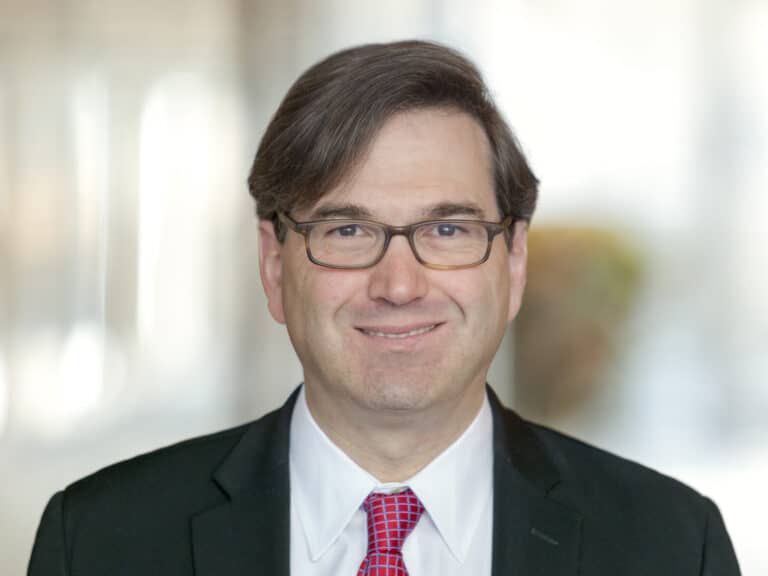
In energy policy circles, the word “resilience” often refers to future-proof systems or infrastructure designed for the transition away from fossil fuels. But resilience means something different to...
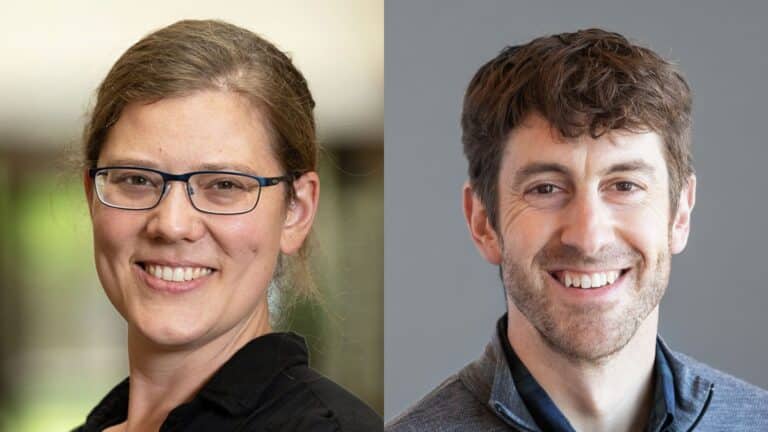
The European Union’s energy landscape is transforming rapidly, as the bloc works to reduce emissions, lower energy prices, and decrease dependence on Russian fuel—three goals proving to be...
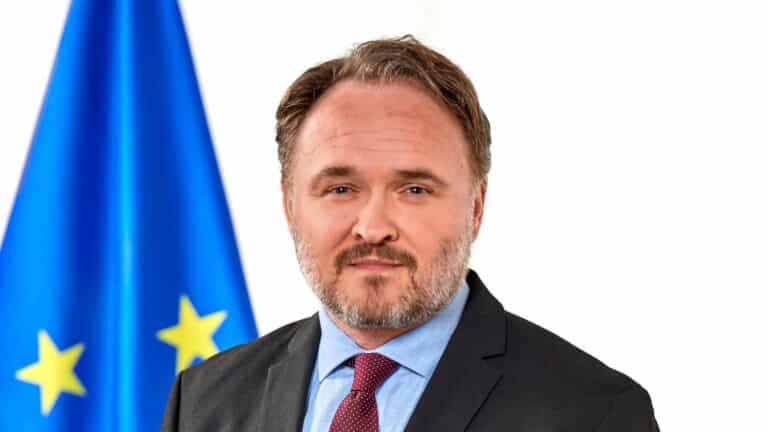
Across America, energy policy is often driven by short-term politics over long-term planning. Despite record-breaking U.S. oil production in recent years, partisan battles continue over fossil fuels and...
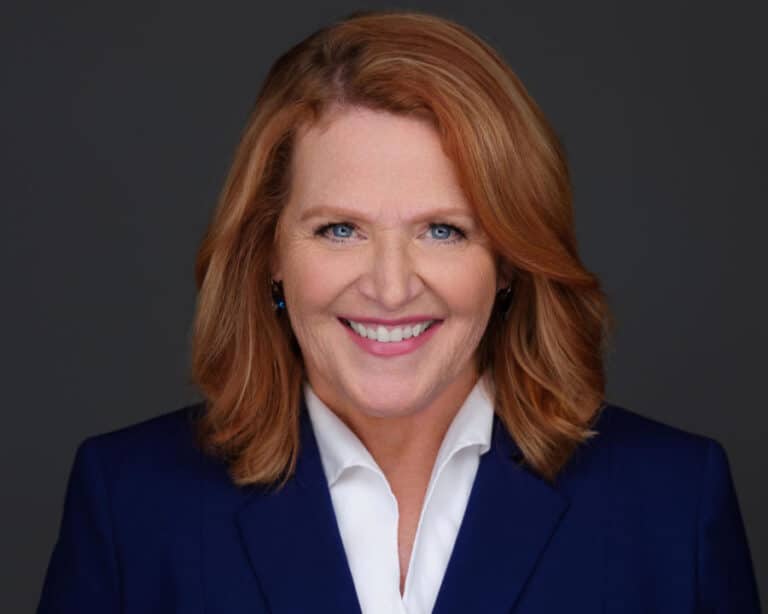
The Just Energy Transition Partnership (JETP) framework[1] was designed to help accelerate the energy transition in emerging market and developing economies (EMDEs) while embedding socioeconomic[2] considerations into its planning and implementation.
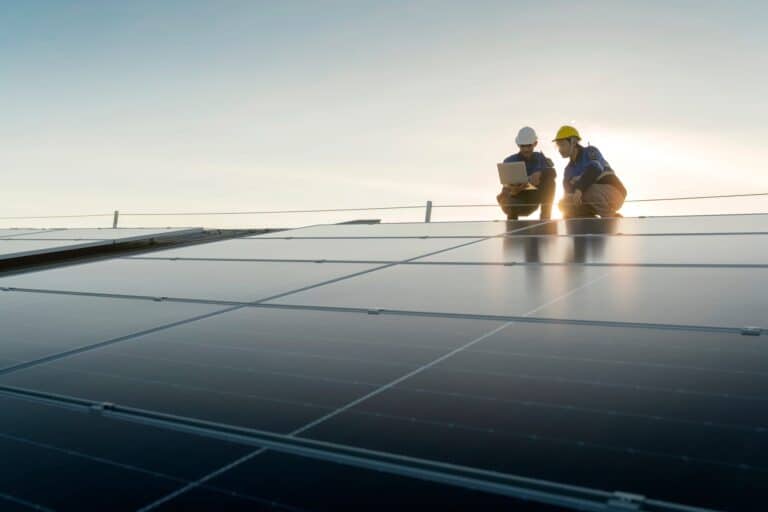
This Energy Explained post represents the research and views of the author. It does not necessarily represent the views of the Center on Global Energy Policy. The piece...

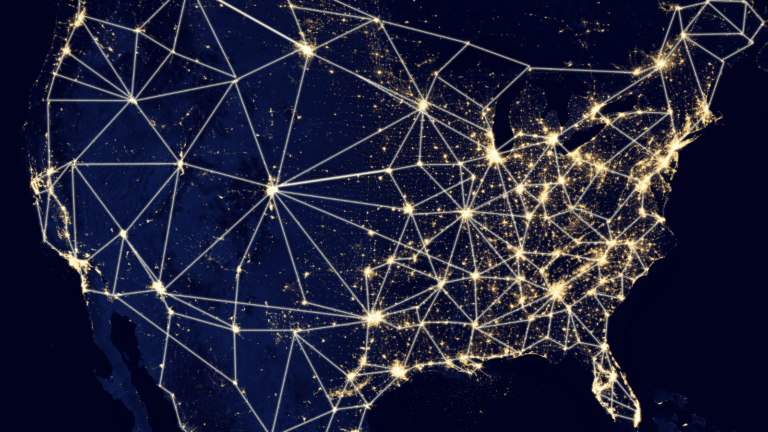
About one in four American households experience some form of energy insecurity. Within this group, Black, Indigenous, Latine, low- and moderate-income (LMI), and other disadvantaged communities face a disproportionately higher burden.
